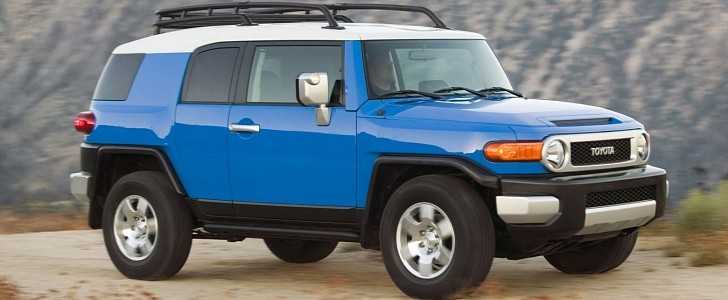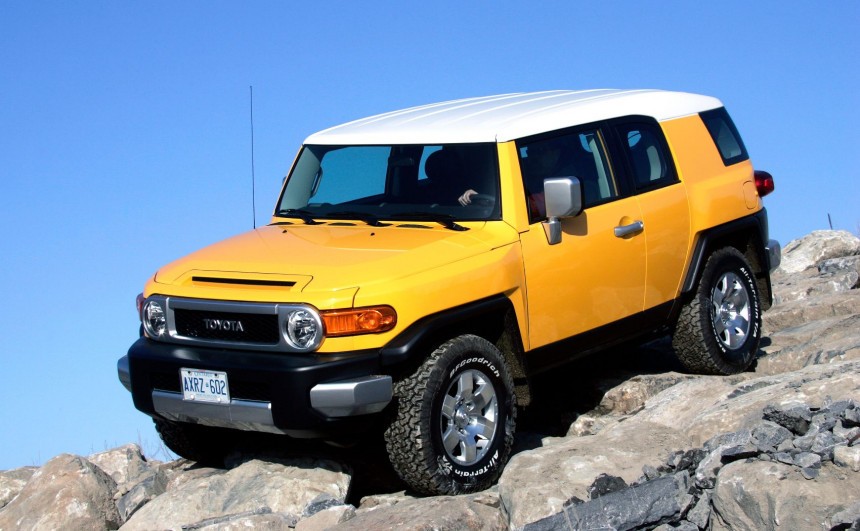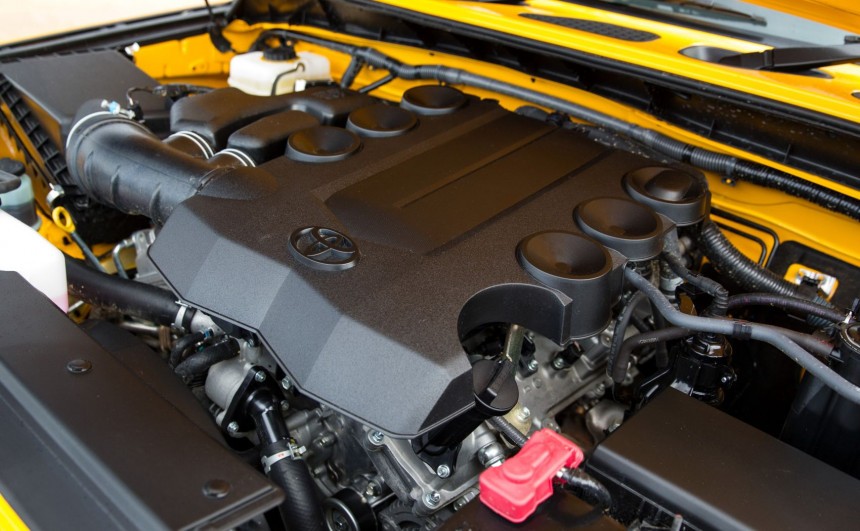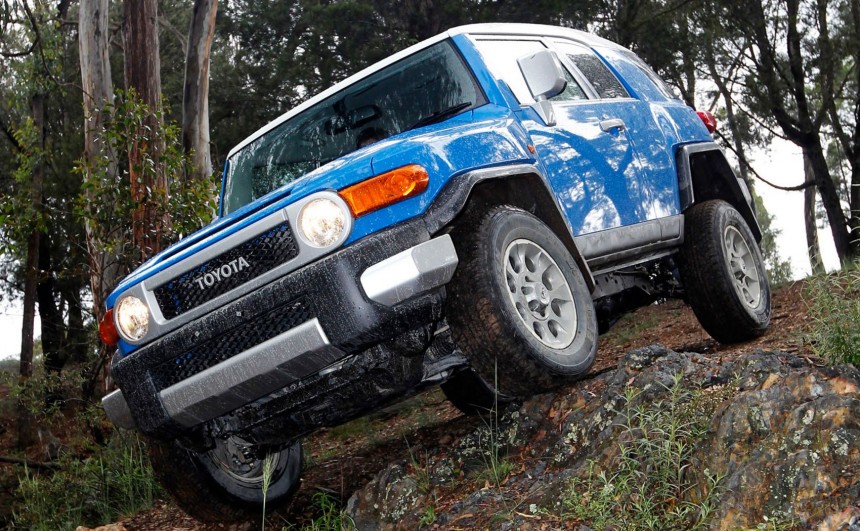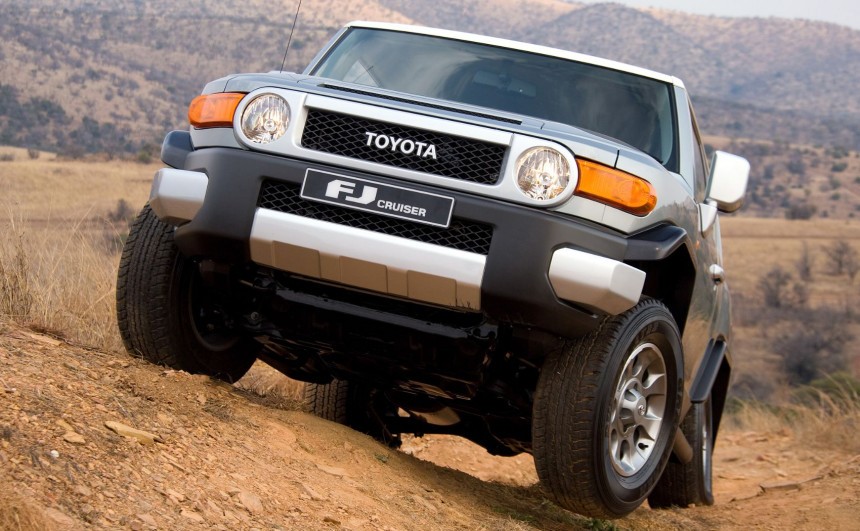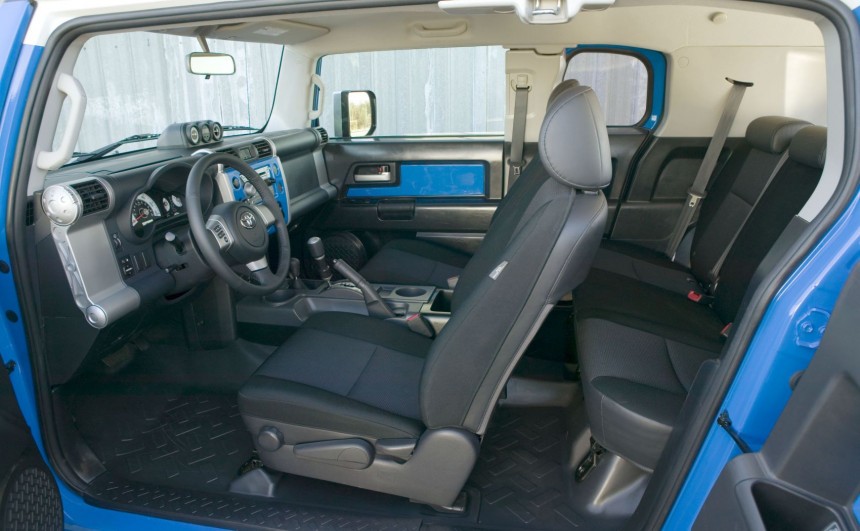Although it never exceeded sales expectations, the FJ Cruiser’s unique retro design, capability, and reliability earned it a cult following. If you’re looking for a versatile mid-size SUV, but you don’t have the money for a new one, a used FJ Cruiser deserves strong consideration and will certainly not disappoint.
The retro-style SUV, which features design cues inspired by Land Cruisers of the 1960s and ’70s, was unveiled as a concept at the 2003 North American International Auto Show held in Detroit.
It was met with positive feedback by both fans and the automotive press, prompting Toyota to develop a production version that arrived at the same auto show two years later.
Production started in 2006 at Toyota’s subsidiary Hino Motors located in Hamura, Japan, and it’s still built to this day for markets such as Chile, the Middle East, the Philippines, and South Africa.
In the U.S., the market it was primarily built for, the FJ Cruiser was sold from 2006 to 2014, receiving numerous awards and positive reviews year after year.
Although only a little over 200,000 units were sold in the country during this time, it gathered a loyal fan base, mainly because of its reliability and off-road capability. For these reasons, it has become a sought-after vehicle for those looking for a funky yet multifaceted SUV, and its resale value has actually increased in recent years.
Under the hood of any FJ Cruiser, you’ll find a solid 4.0-liter V6. From 2007 to 2009, the engine came with single variable valve timing (VVT-i) and produced 239 hp (178 kW) and 278 lb-ft (377 Nm) of torque.
Models built from 2009 onwards gained Dual VVT-i technology, which adjusts timing on both intake and exhaust camshafts resulting in 259 hp (193 kW) and 270 lb-ft (366 Nm) of torque.
The SUV is available in either rear- or four-wheel drive, with the latter versions split into permanent or part-time 4WD. Depending on the drivetrain, it uses either a five-speed manual gearbox or an automatic with five or six speeds.
Both the engine and the transmissions have gained a reputation for reliability, even after years of off-road punishment, and there are few used SUVs out there that can offer the same level of dependability.
It is worth noting that some owners of 2007 models with automatic transmissions have reported that their FJs shudder around 35-45 mph (56-72 kph) due to problems with the gearbox. So, if you’ve found a 2007 model you like, make sure to check the service history of the transmission and pay attention to this issue when test driving it.
If you’re into off-road adventures or simply have to drive through rough terrain frequently, the FJ Cruiser's renowned off-road capability is another reason why you should consider buying one.
Four-wheel drive models equipped with the five-speed manual have a full-time 4WD system that employs a central Torsen locking differential, while part-time 4WD models have high and low-range ratios and automatic locking front hubs.
The shorter overall dimensions and wheelbase mean that the approach, departure, and ramp-over angles are excellent, enabling the FJ to confidently crawl over any terrain.
Some post-2013 models come with the useful CRAWL feature, which adjusts the throttle and brakes on five low-speed settings so that the driver can focus on steering.
Also, with many aftermarket off-road-oriented upgrades available, the SUV can be turned into an extreme off-road monster with ease.
All models built from 2009 onwards are equipped with six airbags as standard, including two in the front, two side-front, and two side-curtain bags that also protect rear seat occupants.
The 2007 and 2014 models received a Top Safety Pick from the IIHS, while the NHTSA gave it five stars for front driver, side driver, and side rear passenger protection, four stars for front passenger protection, and three stars for rollover protection.
Although there are many reasons why you should consider buying a used FJ, the vehicle is not perfect and has its fair share of flaws.
The interior offers just the right amount of comfort and ergonomics for the driver and front passenger, but the backseat is cramped, offering little legroom for an average-height adult. It’s also hard to access due to the small rear "suicide" doors that cannot be opened without opening the front doors first.
If you can live with these flaws, the FJ Cruiser is undoubtedly an excellent SUV, and you won’t be disappointed about buying a used one.
Of course, there are lots of things you should look for before you buy one, so we recommend that you thoroughly check its service history and schedule a pre-purchase inspection before you seal the deal.
There are many FJ Cruisers out there in good shape with prices ranging from $15,000 to $35,000, depending on the model year, drivetrain, or equipment.
It was met with positive feedback by both fans and the automotive press, prompting Toyota to develop a production version that arrived at the same auto show two years later.
Production started in 2006 at Toyota’s subsidiary Hino Motors located in Hamura, Japan, and it’s still built to this day for markets such as Chile, the Middle East, the Philippines, and South Africa.
Although only a little over 200,000 units were sold in the country during this time, it gathered a loyal fan base, mainly because of its reliability and off-road capability. For these reasons, it has become a sought-after vehicle for those looking for a funky yet multifaceted SUV, and its resale value has actually increased in recent years.
Pro: Reliable engine and gearboxes
Models built from 2009 onwards gained Dual VVT-i technology, which adjusts timing on both intake and exhaust camshafts resulting in 259 hp (193 kW) and 270 lb-ft (366 Nm) of torque.
The SUV is available in either rear- or four-wheel drive, with the latter versions split into permanent or part-time 4WD. Depending on the drivetrain, it uses either a five-speed manual gearbox or an automatic with five or six speeds.
Both the engine and the transmissions have gained a reputation for reliability, even after years of off-road punishment, and there are few used SUVs out there that can offer the same level of dependability.
It is worth noting that some owners of 2007 models with automatic transmissions have reported that their FJs shudder around 35-45 mph (56-72 kph) due to problems with the gearbox. So, if you’ve found a 2007 model you like, make sure to check the service history of the transmission and pay attention to this issue when test driving it.
Pro: Renowned off-road capabilities
Four-wheel drive models equipped with the five-speed manual have a full-time 4WD system that employs a central Torsen locking differential, while part-time 4WD models have high and low-range ratios and automatic locking front hubs.
The shorter overall dimensions and wheelbase mean that the approach, departure, and ramp-over angles are excellent, enabling the FJ to confidently crawl over any terrain.
Some post-2013 models come with the useful CRAWL feature, which adjusts the throttle and brakes on five low-speed settings so that the driver can focus on steering.
Also, with many aftermarket off-road-oriented upgrades available, the SUV can be turned into an extreme off-road monster with ease.
Pro: Even for current standards, it’s a safe vehicle
The 2007 and 2014 models received a Top Safety Pick from the IIHS, while the NHTSA gave it five stars for front driver, side driver, and side rear passenger protection, four stars for front passenger protection, and three stars for rollover protection.
Although there are many reasons why you should consider buying a used FJ, the vehicle is not perfect and has its fair share of flaws.
Con: Poor visibility
The FJs are also renowned for their less-than-ideal visibility, with numerous blind spots created by its design. It can be a serious problem until you get accustomed to those spots, so make sure to test drive one extensively to see whether this is a dealbreaker.Con: Cramped backseat that’s hard to access
Con: Poor fuel economy
FJ Cruisers built from 2007 to 2009 have a city/highway mpg of 16/20 (14.7/11.7 liters per 100 km) on premium gas, while 2010-11 models are rated at 17/21 mpg (13.8/11.2 liters per 100 km) on regular gas. Newer models built between 2012 and 2014 also only require regular gas and have a 17/20 mpg (13.8/11.7 liters per 100 km) rating.If you can live with these flaws, the FJ Cruiser is undoubtedly an excellent SUV, and you won’t be disappointed about buying a used one.
Of course, there are lots of things you should look for before you buy one, so we recommend that you thoroughly check its service history and schedule a pre-purchase inspection before you seal the deal.
There are many FJ Cruisers out there in good shape with prices ranging from $15,000 to $35,000, depending on the model year, drivetrain, or equipment.
